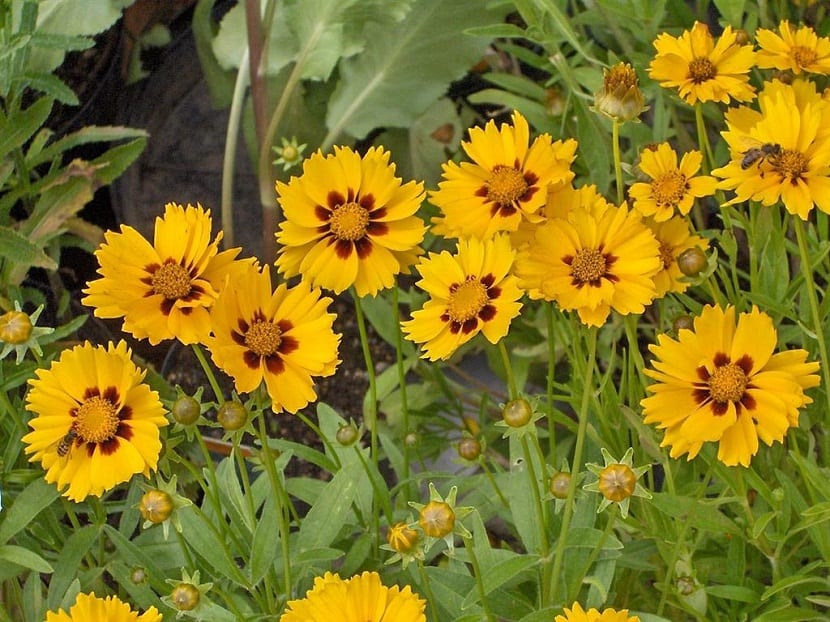
Spear-leaved Coreopsis lanceolata, also known as Coreopsis, It is a wild flower of the Asteraceae family, native to Missouri and generally occurs on prairies, clearings, fields, and primarily roads.
The largest distribution is in the eastern US, as far as western Wisconsin and eastern Texas. The name of the genus Coreopsis, comes from the Greek words koris, which means error and opsis, in reference to the shape of the seed that resembles an insect or tick.
Coreopsis lanceolata characteristics

The genus Coreopsis includes about 90 species from North and Central America, at least 23 of which are grown for their yellow daisy-like flowers.
Full sun plant, undemanding, resistant to drought, long and abundant flowering. Inflorescences solitary, generally terminal on a long peduncle. The colors of this plant vary according to the varieties, ranging from orange yellow to pink and purple.
Flowers bloom on slender, erect stems from spring to early summer. This plant is generally between 60 and 90 cm tall.
Care and cultivation of Coreopsis lanceolata
Coreopsis lanceolata spreads easily from seed and can form large colonies.
It can also be propagated by division of basal rosettes. In the fall, separate the rosette, remove some of the leaves to reduce moisture loss, repot, and water thoroughly.
Seed collection
The fruits are ripe and ready to be harvested about four weeks after the flowers wither, you just have to take a look at the internal series of the bracts and that is when they start to get dark it's time to collect.
Remove the straw and store it in sealed, refrigerated containers. Shelf life is at least three years.
This plant will produce more flowers when grown in nutrient-poor soils that are not too rich in organic compounds. Very fertile soils will make the plant grow bushier but with fewer flowers.
The plants bloom for a long period in summer and produce plenty of floral nectar and pollen for native butterflies, beetles, honey bees and wasps, there is even a species of long-tongued bee that only forages for Coreopsis flowers. It also hosts various types of moth caterpillars.
Finches and other birds feed on the mature seed. Mammal herbivores, including rabbits, deer, marmots, and cattle, like to explore the foliage.
It is easily self-generating when established in the garden and requires minimal maintenance. It blooms best in full sun, too much shade will produce tall stems with few flowers. It is tolerant of heat, humidity and drought.
It's a good idea to dig up your plants every three years to spread the roots a bit. This can be done in the first days of spring, before flowering or in late fall, once the blooming season is over.
Pests and diseases of Coreopsis lanceolata

You don't need to worry about disease or pest problems. Like most native plants, have great resistance to disease and the devastation of insects. Still, it's a good idea to be vigilant.
Examine your plants frequently and fix problems immediately when they arise. Sometimes these may have some aphids problems, but if you notice it early enough, you can remove them by pouring water at high pressure and through the hose.
During the summer, check your plants every day and remove the flowers that are poor or ugly, since doing this daily will increase the number of flowers and most importantly, remember to prune towards the end of the summer for more beautiful flowers in the fall.